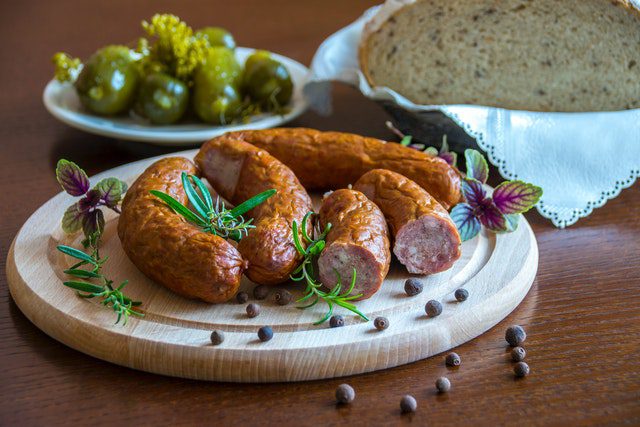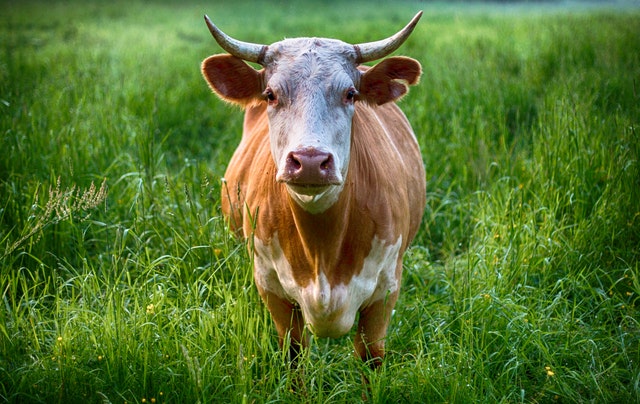Do you enjoy eating beef and pork sausages? In this post, we give you a recipe of how you can make mouth-watering sausages from the scratch.
It covers two areas. Besides, it has a bonus printable summary and an affiliate link to buy the best natural casings for homemade sausages
- Types of sausages
- How to make sausages
Types of sausages
There are 5 types of sausages that you can make at home. They are fresh sausages, uncooked smoked sausages, cooked sausages, dry and semi-dry sausages. Each of these is explained in brief as follows:
- Fresh Sausages You can make these fresh sausages from fresh uncured pork or beef meat. Their colour, texture tenderness and taste will depend on the ratio of fat and lean that you will use to make.
- Uncooled Smoked Sausages (Smokies)Are commonly known as smokies. You will make them by smoking fresh sausages. The smoke gives them a different taste and colour. They need cooking before you can eat them.
- Cooked Sausages (frankfurters)Other names of a cooked sausage are a hot dog or a frankfurter. Use different kinds of skeletal or slurry pork or beef meat. The other option is to use poultry meat.
You need not more than 35% of fat and 10% of water only. If you opt to use chicken meat, it should not exceed 15%. After making them, you can store them fresh, or smoke them for flavor and color.
- Dry and Semidry SausagesYou will make dry and semi dry sausages by fermenting. Once you mix meat, ingredients, spices, cures, and cultures, place it in a curing cooler. Monitor the process until you get the desired acidity. You will then stuff these materials into casings and air dry them to the desired moisture content.
How to make sausages in 6 steps
There are various types of fillers used in sausage making. The common nonmeat fillers are cereal binders and maltodextrin. You can choose oatmeal, flours, or starch. Others are breadcrumbs and rusk or biscuit powder.
There are three types of casings or skins used in sausage making. They are the natural casings, collagen casings and cellulose casings.
Natural casings are made of cow, pig, or sheep intestines. They are the cheapest and easiest to use. “Mutura” is the most popular street food sausage in Kenya made of intestine casings. It’s roasted over open ire or pans.
Collagen or processed casings are made from processed animal collagen harvested from animal hides, bones, and tendons. Processed casings are the easiest to order online.
Cellulose or vegan casings are made from plant cell walls. They are ideal for people who prefer vegan diets.
Detailed Procedure for sausages making
The following 8 steps are the procedure for making sausages. The first 3 steps are grinding, mixing, and hopping. The next 3 steps are emulsifying, stuffing, linking, and tying. The last is chilling, peeling, and packaging.
Before grinding, prechill your meat lean and fat. Mince it in a 5 mm disc meat mincing machine. Add salt and other spices in a mixing container before loading them to the mincing machine.
To mix, tumble the fat and lean cylinders in a mixer for a uniform distribution of fat and lean particles. You can add more ingredients till you achieve the desired texture and composition.
The hopping step involves the use of a chopper to batch the sausage mix before you can transfer it to the emulsifier.
In emulsifying, you can use a blender if you are making a small volume of sausages. An emulsifier is the best choice if you have large volumes to get the desired texture.
Stuffing involves loading the sausage emulsion/sausage dough/ batter made above into a sausage stuffer machine. You will then extrude this into casings.
After stuffing the emulsion into the casing, tie the casing with a thread, metal clips or a mechanical device to divide it into desired weights and sizes.
Read Next How to make more money from your meat shop
At this step, you have made a fresh sausage. If you need to make smokies, smoke or cook them. The next step is to shower them with cold water and chill them in a refrigerator.
The final steps are peeling and packaging. To peel, remove the cellulosic casings or frankfurters. You will then package the sausages into branded packages and ready for sale.
Looking to more information and products on homemade sausages, the following Sausage: Recipes for Making and Cooking with Homemade Sausage [A Cookbook] (affiliate link) will be a helpful guide



